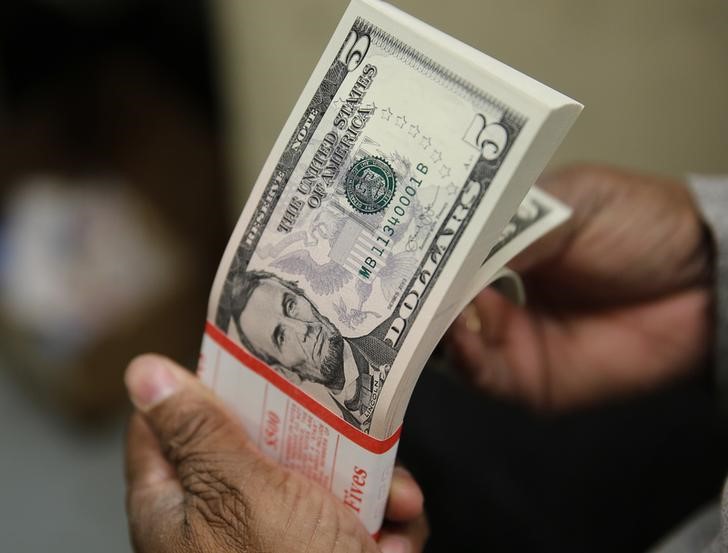By Gina Lee
Investing.com – The dollar was slightly up on Thursday morning in Asia but trading close to a two-month high against both the euro and yen. Pessimism over the U.S economic recovery from COVID-19 receded ahead of the release of the U.S. payrolls report.
The U.S. Dollar Index that tracks the greenback against a basket of other currencies inched up 0.01% to 91.112 by 8:52 PM ET (1:52 AM GMT), near its highest level since early December 2020.
The USD/JPY pair inched up 0.03% to 105.05, with the dollar near its highest level against the yen since mid-November.
The AUD/USD pair was up 0.27% to 0.7638, with the riskier AUD boosted by hopes for continued U.S. stimulus. The Reserve Bank of Australia will release updated economic forecasts on Friday, which could determine the AUD’s direction. Across the Tasman Sea, the NZD/USD pair inched up 0.08% to 0.7212.
The USD/CNY pair was flat at 6.4579.
The GBP/USD pair inched down 0.03% to 1.3640, trading near an eight-month high against the euro with the Bank of England handing down its policy decision later in the day. Although the central bank is widely expected to keep both interest rates and quantitative easing steady, investors will look for clues on the likelihood of negative interest rates.
Investors’ sentiment for the dollar recently improved as COVID-19 vaccination programs continue globally, the $1.9 trillion stimulus package proposed by U.S. President Joe Biden advances through Congress, and economic data that has slowly but surely been improving forcing some bearish investors to retreat from their short positions.
On the data front, the U.S. payrolls report for January, including non-farm payrolls, will be released on Friday. The release will be a test for the dollar’s recent rise, as the data will indicate how the U.S. economy reacted to the dip in growth seen near the end of 2020.
Forecasts prepared by Investing.com predict that 50,000 non-farm payrolls were added to the U.S. economy, against the 140,000-jobs contraction reported in December as a second wave of COVID-19 cases and the ensuing restrictive measures decreased economic activity.
“The dollar’s recovery was triggered by a rebound in yields and an increase in inflation expectations … this is supporting the dollar, which now has more room to rise against the euro, because the euro zone looks like it is lagging behind U.S. economic growth,” IG Securities senior foreign exchange strategist Junichi Ishikawa told Reuters.
The dollar stood close to a nine-week high against the euro.
